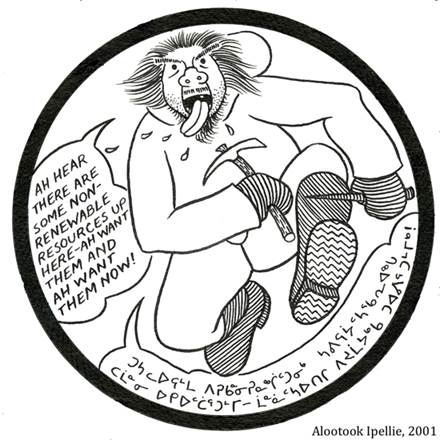Conservation
"About five o'clock the next morning, I got up to see about my
horses . . . I could see buffalo all over. There were thousands and thousands
of them . . . All around us, as far as we could
see, the plains were black with buffalo. The prairie seemed to be moving . . .
There was one thing that I did not like about that hunt. I saw hundred of buffalo, during that week, slaughtered for their
hides. The whole carcass was left to rot on the plains. . . There were many
bands of hunters on the plains beside ours. In all my years of buffalo hunting,
I never destroyed buffalo for their pelts alone. I always took the whole
carcass . . . My wife had once said that since we were going to make a living
hunting buffalo, she did not want me to kill more than we could dry and pack .
. .
The Yankees shot more buffalo for their hides than all the Indians and
half-breed hunters put together. The Indian knew better. They did not want to
see the buffalo gone forever. Parties of Yankees used to come up to the
North-West to shoot for sport. They would sit on hill
and shoot. Once Buffalo Bill came on a shooting trip, and shot five hundred
buffalo—just for fun."
Norbert Welsh, as told to Mary Weekes, The Last Buffalo Hunter, New
York, 1939, pp.82-85
"Every
buffalo dead is an Indian gone."
U.S.
Army colonel

[In
July 1881 Poundmaker acted as guide and interpreter during Governor-General
Lord Lorne's tour of the Canadian northwest from Battleford to Calgary.]


"Here
were a people [Inuit] with less resources than any other people on earth, and
yet they were the happiest people I have ever know."
Robert J. Flaherty, director, Nanook of the North, 1922

"When
you are in the mountains, you are as much a part of nature as the leaf that
falls from the tree, the water in the creek, the rain from the sky. You are no greater than these, only part of it all:' As in the
beginning, world without end!' Death is all around you, thousands of years of
death, unmourned dead things absorbed into the making
of new life."
Maisie Hurley, newspaper article (unknown paper and date); reprinted in The
Native Voice, December 1962
"Since our forebears first set foot on this continent, the white
man has been taking from the Indians: his food, his source of livelihood, his
traditional way of life. The only thing the white man has refused to accept is
perhaps the most valuable thing he had to offer: his unique sense of
values."
Joe
Rosenthal, 1971

"Unfortunately
for my people, the legislators turned a deaf ear. The dam [Bighorn Dam,
Alberta] was built and much of the Stoneys'
traditional hunting grounds–land to which we believe we had a valid claim under
treaty seven–now lies under a twenty-seven-mile-long artificial lake. . . Homes
were swept aside by heavy machinery, graves turned over or some graves moved to
a new site. . . Even more far-reaching in its results was the almost complete disappearence of game from the area."
Chief John Snow, These Mountains Are Our Sacred Places










"The
real issue is not whether technology is good or bad but rather whether or not
the native people are going to have access to the decision
making process. The question is not whether there is going to be any
development in the north, the question is: are native people going to help
decide what kind of development is going to take place."
Duke Redbird, 1980




[Activists
raised a totem pole at UBC's museum of anthropology to bring attention to
provincial government plans permitting Macmillan Bloedel to log on Meares
Island.]

"Our
sovereignty was denied and 'reserve' lands were created for us to live within
[treaties were not signed in most of British Columbia]. This practice destroyed
our economic base, making us and dependent when we had been self-sufficient.
And it held us back from fulfilling our obligation to the Creator to protect
Mother Earth."
Lil'wat People's Movement – background information, 1991


